Arc’teryx Rush LT Jacket
Reviewer: 5’8”, 155 Ibs
Size Tested: Medium
Blister’s Measured Weight (size Medium): 435 grams
Fabric:
- Main Body: 3-layer Gore-Tex Pro w/ 40-denier nylon face fabric
- Shoulders & Lower Back: 3-layer Gore-Tex Pro w/ 80-denier nylon face fabric
Stated Features:
- Laminated high-strength hanger loop
- Micro-seam allowance (1.6 mm) reduces bulk and weight
- Taped seams for added weatherproofness
- Helmet compatible StormHood™
- Cohaesive™ hood adjustments for ease of use with mittens or gloves
- Drop back hem
- Cohaesive™ hem adjustments for ease of use with mittens or gloves
- Hidden Recco® reflector
- Lightweight powder straps provide secure attachment to Slide ‘n Loc™
- Slide ‘n Loc™ snap closures enable certain jackets to be fastened to ski pants to prevent snow entry
Pockets:
- 2 exterior hand (zippered)
- 1 exterior bicep (zippered)
- 1 interior chest (zippered)
- 1 interior drop-in
MSRP: $649
Test Locations: Crested Butte, CO; Milwaukee, WI
Days Tested: 15
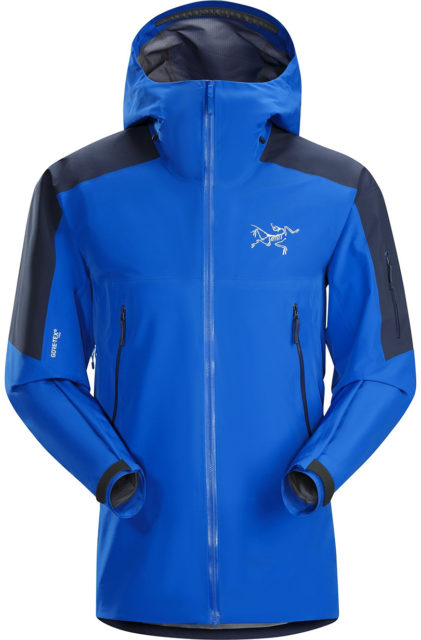
Intro
The “Rush” series has long served as Arc’teryx’s top-of-the-line “freeride touring” shells, but they’ve diversified the shells under the Rush name over the past year.
The Rush LT Jacket takes the more generous fit, burly fabrics, and backcountry-oriented features of the original Rush jacket and cuts out some weight, making it better suited to days when a couple hundred grams can make a significant difference.
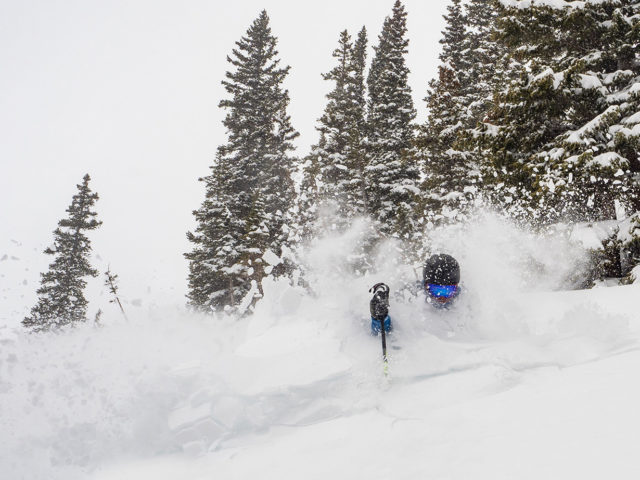
I’ve spent much of this spring skiing in the Rush LT Jacket both inside and outside of the resort — and also using it far away from any snow. Overall, I think Arc’teryx has produced another very solid offering with this jacket, and it should be on your radar even if you’re not looking for a snowsports-specific shell.
Fit
The Rush LT Jacket’s fit is pretty average for a ski shell. It’s significantly roomier and longer than hiking, running, and climbing-oriented shells like the Arc’teryx Alpha FL, Patagonia Storm Racer, and Rab Kinetic Plus. But the Rush LT Jacket is not nearly as long or baggy as more inbounds-oriented ski / snowboard shells like the Open Wear Open One 3L Shell, North Face Ceptor, and Black Diamond Mission.
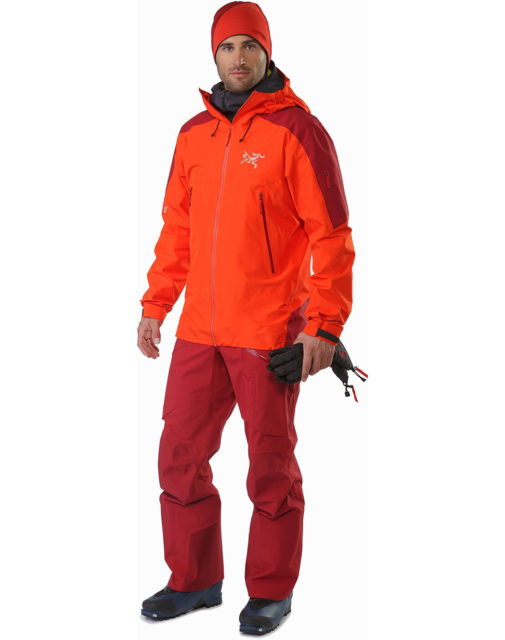
I’m 5’8”, 155 lbs and I think the size Medium Rush LT Jacket I tested is pretty ideal (I wear a Medium in most tops). On me, the Medium Rush LT hits just below my hips, the cuffs come to my second knuckle, and the shell has plenty of room for layers underneath without feeling unnecessarily baggy on the skin track.
There are some slimmer ski shells out there like the Norrona Lyngen Hybrid, Patagonia Ascensionist, and Black Diamond Helio Active Shell that might be better if you want a very streamlined silhouette. But I think the Rush LT Jacket’s fit is really nice for both skiing and year-round use, which I’ll expand on later.
Features
While Arc’teryx cut some weight with the Rush LT Jacket vs. the standard Rush Jacket, they didn’t get rid of all of the shell’s features. In fact, the Rush LT has almost the same exact feature set as the standard Rush Jacket, but comes in over 100 grams lighter.
For pockets, the Rush LT Jacket gives you two high, backpack-compatible hand pockets, a bicep pocket, an interior mesh drop-in pocket, and interior chest pocket. All except the drop-in pocket are zippered, all the zippers are easy to actuate, and all the pockets are pretty standard compared to other ski shells. The Rush LT Jacket’s hand pockets aren’t super large at 23 cm and only fit my smallest skins (cut for 175 cm x 90 mm skis). The bicep pocket is nice for a pass or chapstick, though I’d personally be fine without that pocket on a lightweight jacket like the Rush LT. I love that Arc’teryx didn’t ditch the interior zippered chest pocket as I end up using it a lot for a phone, wallet, bar, etc., and the drop-in pocket is nice for stashing wet gloves, goggles, etc.
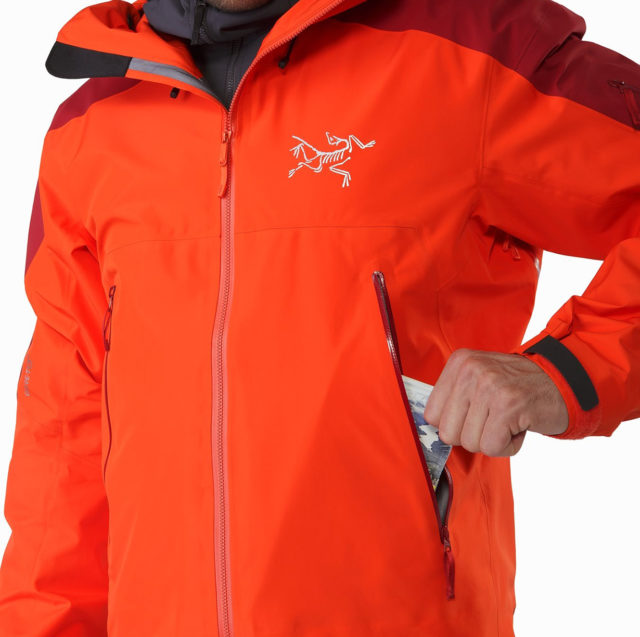
One thing I’ve come to love on the Rush LT Jacket is its pit zips. While not super big at 30 cm, the Rush LT’s pit zips are positioned in a way that they don’t get covered by my packs’ shoulder straps. This means I can open and close the pit zips without struggling to get the zippers around pack straps, which can be surprisingly annoying.
The Rush LT’s pit zips are positioned so that they don’t follow the natural line from your hip to your wrist (like most jackets’ pit zips), but instead come across from the top of the armpit to your back. In addition to not getting obstructed by a pack’s straps, the Rush LT Jacket’s pit zips also seem to do a better job than most when it comes to catching air while you’re moving and flushing that air through the inside of the shell. This makes the Rush LT Jacket’s relatively small pit zips feel similarly efficient vs. longer, but more traditionally positioned pit zips.
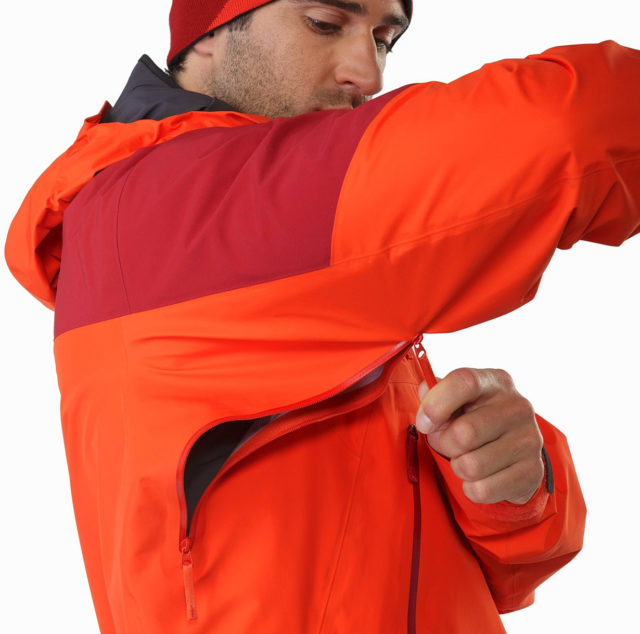
The last things to note here are the Rush LT Jacket’s adjustable hood, hem, and cuffs. I think Arc’teryx does an excellent job when it comes to patterning, and the Rush LT Jacket’s hood is an example of this. It fits really well whether I’m wearing a helmet or not, the embedded Cohaesive cord locks are easy to use with bulky mittens, and it’s above average in terms of range of motion and field of view.
The Rush LT Jacket also features embedded cord locks at the hem that do a good job of tightening down the hem, and doing so without leaving a bunch of dangly bits hanging off the bottom. The Rush LT Jacket’s Velcro cuffs are equally nice and, based on my time with numerous other Arc’teryx shells that feature similar Velcro cuffs, I expect the Rush LT Jacket’s cuffs to hold up well.
Weight
The Rush LT Jacket is impressively light for what it is. The only two jackets we’ve tested in this class that come in lighter than the Rush LT Jacket use much lighter face fabrics and have fewer features. Combined with its relatively burly fabric (for its weight), the Rush LT Jacket’s low weight is a big part of what I think makes it so versatile. Packed down, the Rush LT Jacket is about the size of a large grapefruit or a small cantaloupe.
Here a list of similar jackets and their weights. Note that not all of the jackets are the same size, so try to keep that in mind when making comparisons.
364 g Black Diamond Helio Active Shell, size Medium
366 g Patagonia Ascensionist Jacket, size Medium
435 g Arc’teryx Rush LT Jacket, size Medium
518 g Flylow Cooper Jacket, size Medium
544 g Outdoor Research Hemispheres Jacket, size Medium
563 g Rab Sharp Edge Jacket, size Medium
574 g Amundsen Peak Anorak, size Medium
590 g Flylow Higgins Coat 2.1, size Large
593 g Patagonia PowSlayer Jacket, size Large
605 g Patagonia Descensionist Jacket, size Medium
610 g Strafe Cham Jacket, size Large
615 g Patagonia SnowDrifter Jacket, size Medium
626 g Arc’teryx Sabre LT Jacket, size Medium
635 g Mammut Alvier Armor Hardshell Jacket, size Medium
726 g Holden M-51 Fishtail 3 Layer Jacket, size Medium
825 g The North Face Ceptor Jacket, size Medium
841 g Strafe Pyramid Jacket, size Large
848 g Open Wear Open One 3L Shell Jacket, size Medium
Materials
The Rush LT Jacket is made from two different versions of a 3-layer Gore-Tex Pro laminate. The shoulders and lower back use an 80-denier face fabric for added durability, while the rest of the jacket uses a 40-denier nylon face fabric to cut down weight.
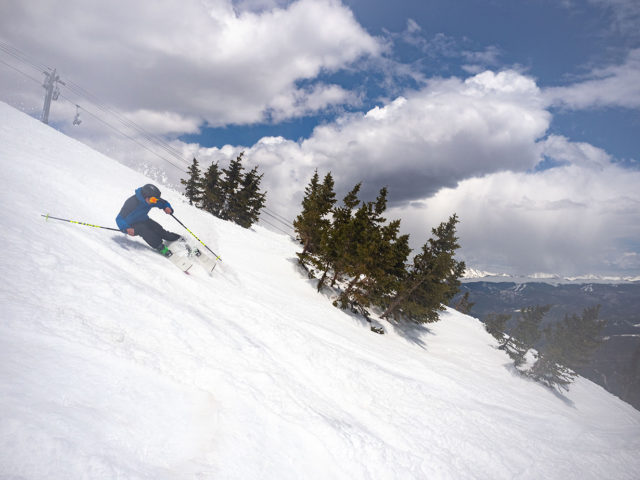
If you’ve used any recent Gore Pro shells, the Rush LT Jacket will feel familiar. Its fabrics (both the 80D and 40D versions) are pretty stiff and crinkly compared to many other shells on the market today. The Rush LT Jacket’s fabric is not less comfortable than any other Gore Pro fabric I’ve used, but if you’re looking for a really soft and supple “hardshell,” you should look at options that use Gore-Tex C-Knit (e.g., Arc’teryx Sabre LT) or other shells with supple hand feels like the Patagonia SnowDrifter, Strafe Cham, Amundsen Peak Anorak, etc.
Because of its stiffer feel and smooth backer fabric, the Rush LT Jacket isn’t as comfortable as those aforementioned shells when worn directly on my skin. But the potential upside for some people with the Rush LT Jacket’s fabric is that, since it has more structure to it than shells with softer fabrics, the Rush LT Jacket stays off your skin or layers and doesn’t “cling” to your arms, shoulders, etc.
But an ultra-comfortable hand-feel isn’t what Gore Pro is known for — it’s protection. Which brings us to…
Weather Resistance
This is why I think Gore Pro still has a place in the shell market. Of all the waterproof / breathable fabrics I’ve used, Gore Pro is the one I trust most for really nasty weather. Because, while most shells that are claimed to be “waterproof” do a good job in most scenarios, Gore Pro has proven (to me) to be the most reliable in sustained heavy precipitation and moisture.
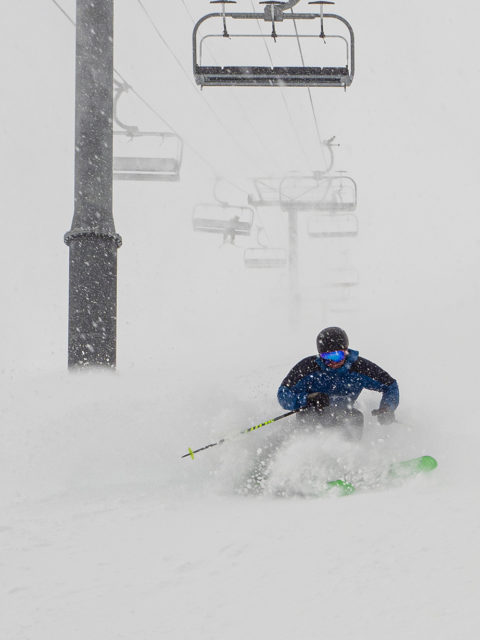
I’ve skied in the Rush LT Jacket in heavy spring storms, I’ve fished in it during full-on downpours, and I’ve used it as a seat when hanging out in the snow. I’ve never had any water get through the fabric, and the DWR is holding up really well.
There are other upsides (and downsides) to Gore Pro that I’ll talk about or have already touched on, but I think its reliable weather resistance is one of the top reasons to choose it over some of the more comfortable and / or more breathable laminates out there.
And if this talk of laminates, membranes, etc. is confusing, I’d recommend reading our Outerwear 101 and 201 articles.
Breathability
Gore Pro’s excellent weather resistance comes at the cost of some breathability. There are now several other waterproof / breathable membranes out there that breathe better than Gore Pro, including Gore’s own “Active” membrane, Polartec NeoShell, Schoeller C-Change, Strafe’s Recon fabric in their Cham kit, the fabric used in the Patagonia Descensionist kit, and a few others.
That said, I think Gore Pro does breathe a bit better than standard Gore-Tex, and I’d also put it above most brand’s standard proprietary laminates (e.g., North Face HyVent, Patagonia H2No, Outdoor Research Ascent Shell, etc.) when it comes to breathability.
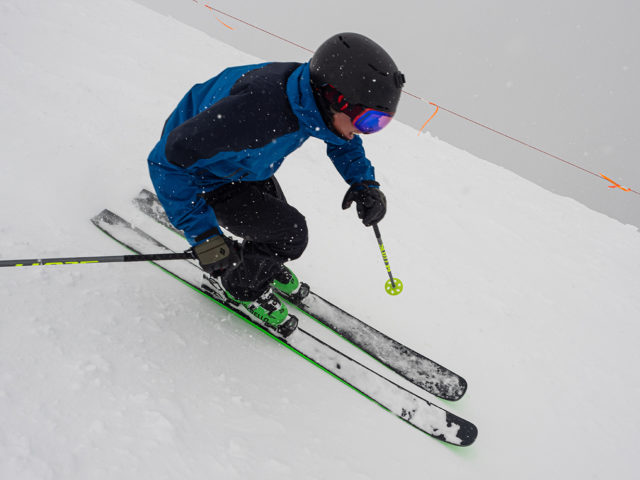
I’ve been able to skin in the Rush LT Jacket with just a base layer for around 45 minutes in temps up to 25°F before I feel the need to ditch the shell. For me, that’s pretty good for a waterproof shell. More breathable jackets like the Patagonia Ascensionist, Black Diamond Helio Active Shell, and Norrona Lyngen Hybrid are all better options if you like (or need to, due to weather) to skin with your shell on. But the Rush LT Jacket is respectably breathable for how weather resistant it is.
Durability
I’ve now put about 15 days in the Rush LT Jacket and it basically looks new. That’s obviously not a long-term test, so I’ll update this review if I run into any issues down the line. But based on positive experiences with other Arc’teryx pieces that use Gore Pro, I have very high expectations for the Rush LT Jacket’s durability.
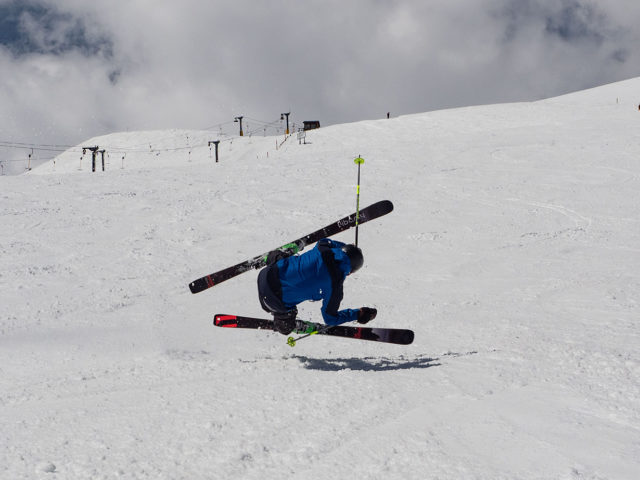
Given its relatively thin, light fabric, I wouldn’t expect the Rush LT Jacket to hold up to repeated abrasion as well as much heavier shells like the Arc’teryx Sabre, North Face Ceptor, or Black Diamond Mission. But I’ve been using a few lightweight Gore Pro shells for several years now with no issues — I just don’t mistreat them as much as I would a heavier, thicker shell.
Who’s It For?
The Rush LT Jacket is light, very protective, fairly breathable, and it has a moderate fit and feature set. Because of all that, I think a lot of people could get along well with it — and not just skiers and snowboarders.
The Rush LT Jacket’s excellent weather resistance and low weight make it a great emergency shell for a wide range of activities. While I’ve used it a lot when I’m touring, I’ve also tossed it in my pack for fishing, biking, and hiking trips. It doesn’t weigh much, it packs down pretty small, I know it’ll keep me dry, and it’s not as long and bulky as many other ski shells so it doesn’t feel like overkill for activities outside of skiing.
Of course, this ski / snowboard shell seems best suited for … skiing and snowboarding. It’s long and roomy enough to provide ample coverage and space to add bulky layers underneath, it’s got the features I want in a ski shell, and it’s fended off the nastiest weather I’ve been able to find.
To me, the Rush LT Jacket seems like a great shell for backcountry skiers who spend most of their time in wet environments like the U.S. Pacific Northwest. If you don’t spend much time skiing / riding in really wet, heavy snow, you could get away with using a more breathable shell like the Strafe Cham, Patagonia Descensionist, or Black Diamond Helio Active Shell. But if you want a light, fairly breathable shell that’ll keep you dry in wet weather, the Rush LT Jacket makes a lot of sense.
If you don’t spend much time in the backcountry and low weight isn’t a priority, I’d go with a heavier, more durable shell like the North Face Ceptor, Black Diamond Mission, or Arc’teryx Sabre or Sabre LT.
Lastly, I think people who live in dry or wet climates and who are looking for one shell for everything — from winter touring to dealing with the summer storms — should also check out the Rush LT Jacket. It’s moderate fit, low weight, and fantastic weather protection make it a very versatile shell.
Bottom Line
The Arc’teryx Rush LT Jacket brings excellent weather resistance in a very light, packable package, but it isn’t some ultra-specialized piece that only works for certain niche purposes. Despite its snowsports-oriented design, the Rush LT Jacket is a shell that works well for a lot of things, and should be on your list if you’re looking for a jacket that offers light, packable, year-round protection.

Hey guys, just a question about the Higgins 2.1 coat:
You list it as 590 grams in size L, but Flylow themselves list it as 698 grams (average). Are you sure your weight is correct?
And will you have a review of that jacket up soon?
thnx!
We’re very confident in our measured weights, so we’re not sure why there’s a 100-gram difference between it and Flylow’s stated weight. My only guess would be that they still have on their site the old weight for the original Higgins Coat (which was closer to 700 grams).
And we’re hoping to get our review of that jacket up early this coming season.
Trying to get a replacement Arcteryx jacket. If all I’m doing is resort riding with occasional 15-30 minute hikes to places, would you get the Rush, Rush LT, or Sabre? I’m struggling to understand the key differences between them. I am leaning towards the Rush. Key things I’m looking for are Goretex Pro, powder skirt, and durability (I fall a lot :P)
In that case, the standard Rush is probably your best bet. It should offer very good durability (a bit better than the Rush LT) and be a bit more breathable than the standard Sabre.